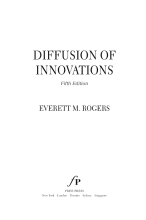Characteristics and Applications of Polymers - Deformation of Elastomers
6 important questions on Characteristics and Applications of Polymers - Deformation of Elastomers
What are properties of elastomeric materials?
What is molecularly seen the difference between unstressed and stressed elastomers?
What is the driving force for elastic deformation?
- Higher grades + faster learning
- Never study anything twice
- 100% sure, 100% understanding
What is the result from the entropic effect?
2. The modulus of elasticity increases, in contrast with other materials.
What criteria must be met before a polymer is called elastomeric?
2. Backbone rotation must be relatively easy.
3. The onset of plastic deformation must be delayed, which happens by the crosslinks.
4. The elastomer needs to be above it's glass transition temperature, below that point the material is brittle.
How does the chemical reaction of vulcanization happen?
The question on the page originate from the summary of the following study material:
- A unique study and practice tool
- Never study anything twice again
- Get the grades you hope for
- 100% sure, 100% understanding
































